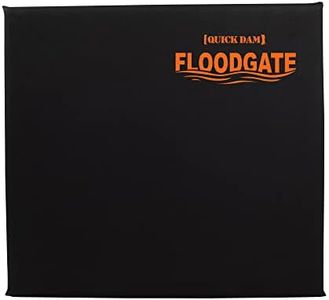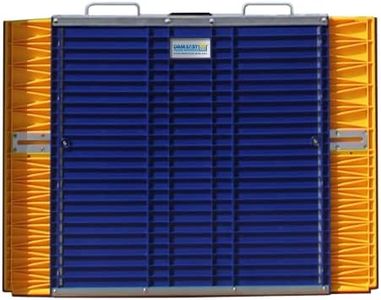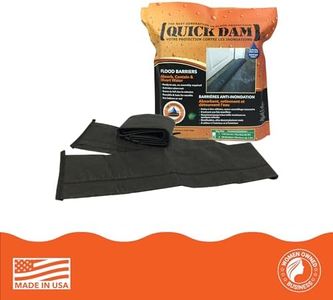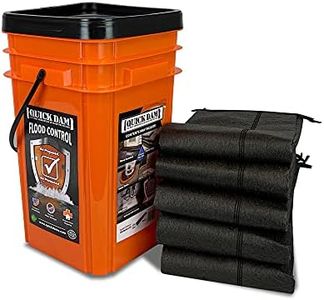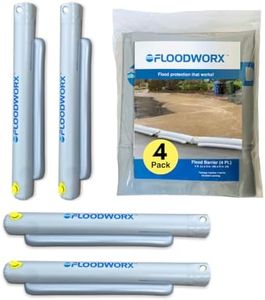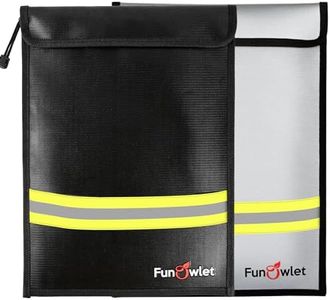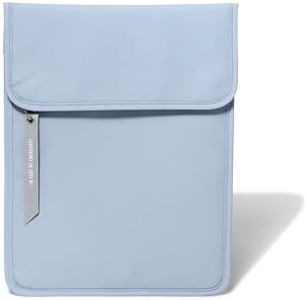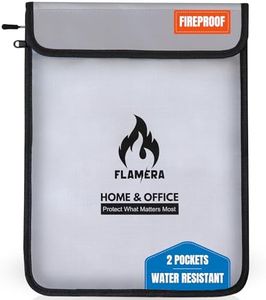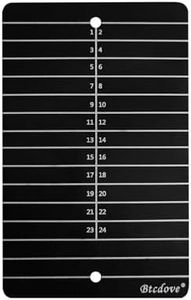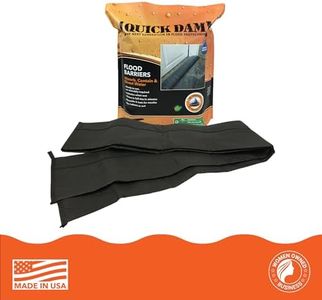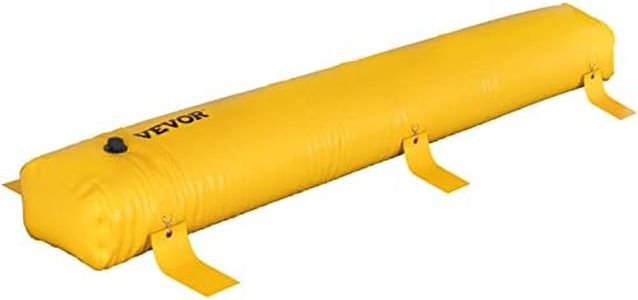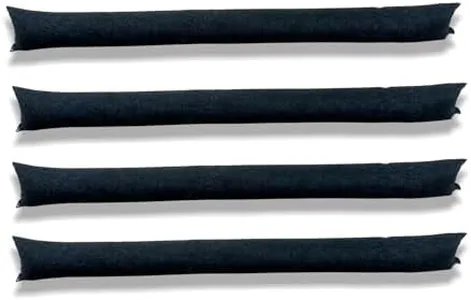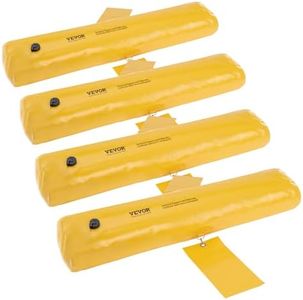10 Best Flood Barriers 2025 in the United States
Our technology thoroughly searches through the online shopping world, reviewing hundreds of sites. We then process and analyze this information, updating in real-time to bring you the latest top-rated products. This way, you always get the best and most current options available.

Our Top Picks
Winner
Quick Dam QDFG25 Flood Gate, 25-in, Orange,Black
Most important from
153 reviews
The Quick Dam QDFG25 Flood Gate is an effective flood barrier that is ideal for homeowners looking to protect doorways from flood damage. Its height of 26 inches provides substantial protection against rising water levels, while the polypropylene material ensures durability and resistance to water damage. The standout feature of this flood gate is its easy installation—no fixtures or alterations are required, making it a convenient option for those who need quick deployment during emergencies.
Furthermore, its sturdy steel frame allows for repeated use, offering long-term value. Storage and transport are simplified by its compact design, although the item's weight, at nearly 14 kilograms (or over 30 pounds), may be cumbersome for some users to handle. The flood gate's adjustability to fit different doorway sizes is an added benefit, making it versatile for various home setups.
The Quick Dam QDFG25 is a reliable, reusable barrier that balances ease of use with effective flood protection, although its substantial weight might be a consideration for some. It suits homeowners seeking straightforward, reusable flood defenses without the hassle of permanent installations. While it may rank lower in popularity within its category, it offers a trustworthy solution for those prioritizing easy flood defense.
Most important from
153 reviews
Dam Easy Flood Barrier w/Extension Pole - Residential Flood Protection for Larger Openings (Two Barriers and One Pole)
The Dam Easy Flood Barrier with Extension Pole is designed for residential flood protection, particularly for larger openings. It includes two barriers and one pole, covering openings between 66” to 89” wide and can protect against flood waters up to 28” high. One of the most notable strengths of this flood barrier is its quick and easy installation. Unlike traditional sandbags, the Dam Easy system can be set up in under 5 minutes, making it highly convenient for situations with little storm notice.
The barriers are also reusable, which can save costs in the long run. Additionally, the system inflates to create a strong, watertight seal that effectively keeps water out. However, it does require some installation effort, specifically drilling a hole to install an anchor rod for the extension pole, which might be a bit cumbersome for some users. Storage could be another consideration since the barriers and pole will need space when not in use.
The product is made from durable materials, ensuring longevity and reliable performance during floods. This system is best suited for homeowners looking for a quick, reusable, and relatively easy-to-install flood protection solution for larger doorways or openings.
Dam Easy - Door Dam Flood Barrier - Residential Flood Protection up to 28 inches for Doorways
Most important from
38 reviews
The Dam Easy - Door Dam Flood Barrier is a practical solution for homeowners seeking reliable flood protection up to 28 inches for doorways. One of its standout features is the easy installation process, which requires no adhesives, hardware, or permanent alterations to your home. You simply place it in position, extend it to fit your doorway, and inflate it to create a watertight seal. This makes it a convenient alternative to traditional sandbags, which can be cumbersome and messy.
The barrier is capable of fitting openings between 30.7 inches and 43.3 inches, making it versatile for various door sizes. It can be installed in under 5 minutes, making it ideal for quick deployment before a storm hits. Reusability is another plus, as there's no need to purchase new barriers after each use.
The product's storage is straightforward due to its compact size when deflated. However, the barrier weighs 44 pounds, which might be a bit heavy for some users to handle alone. It is ideal for those looking for a reusable and straightforward flood protection solution, striking a balance between effectiveness and convenience.
Most important from
38 reviews
Buying Guide for the Best Flood Barriers
When it comes to protecting your property from flooding, choosing the right flood barrier is crucial. Flood barriers are designed to prevent water from entering your home or business during heavy rains or rising water levels. To make an informed decision, you need to understand the key specifications and how they relate to your specific needs. Here are the main factors to consider when selecting a flood barrier.FAQ
Most Popular Categories Right Now
